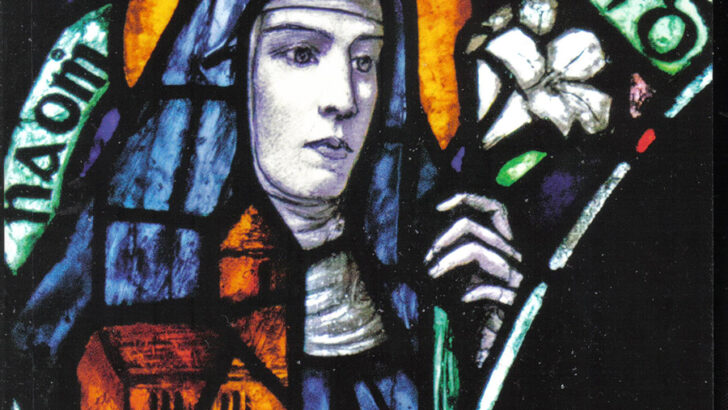St Brigid was recognised from an early date as one of the ‘Three Patrons of Ireland’. Born of the Celtic nobility, in Irish history and legend she has always held a premier place; and yet about her life and achievement there has always been, because of her early date, so soon after St Patrick, both confusion and controversy.
This has become even more so in recent times as her life and its significance in her own time and later has been reconfigured, even ‘re-imagined’, in the light of modern attitudes and notions. And so there will, I suspect, be the wide interest of this book, published a week ago in advance of her saint’s day.
It consists of two early lives of the saint, edited and translated from Latin by Prof. Stephen Freeman, an acknowledged authority on the period, who is a professor at Pepperdine University in California, on the period.
Cogitosus
The first text is by a priest of the period named Cogitosus, and the second is a slightly earlier text called the Vita Prima. These are in Latin: there are, of course, other lives of the saint in Irish.
Here they are published together for the first time, and will form an important addition to the printed materials available on early Christian Ireland for both scholars and the general reader. In his introduction Prof. Freeman lucidly describes their origins and previous publication.
If the Vita Prima presents Brigid as a travelling saint, moving around the districts of Meath, Westmeath and Leitrim, and sometimes further afield, Cogitosius concentrates on Kildare and on Brigid’s reputation vis á vis St Patrick; two views of great interest to historians for the light they may shed on early Christian Ireland.
Two episodes in the books will be of special interest to ordinary readers though. The first is from the Vita Prima. A common peasant killed a fox which was allowed the freedom of the hall of a certain king. It was trained to perform tricks for the court.
Arriving at the palace she pleaded for the man. But the king was obdurate: it was a new fox, or death and slavery”
The peasant was dragged before the king for his crime. He was threatened with death, his wife, sons and household with slavery, unless the king’s loss was made good by another fox as clever as the first.
Hearing of this Brigid mounted her chariot and set out on the road to the king’s stronghold. A wild fox jumped into the car and hid under the saint’s cloak. Arriving at the palace she pleaded for the man. But the king was obdurate: it was a new fox, or death and slavery.
The wild fox came out from under her cloak, and performed tricks as well as the earlier one. The king was delighted. The peasant was released. The saint returned to her own place. But so did the new fox, which soon escaped from the king’s hall “to the wild places and to its own den” (p. 123).
Affinity
This is a reminder of the charming affinity of these early Irish saints with wild creatures, which has often been commented on. They seem not to have seen man as master of the world, but rather that humans and creatures shared together in the common creation of God.
The other passage comes from Cogitosus a little later, in speaking of her shrine at Kildare.
A wonderful riot of colour and design, perhaps with echoes of the sort of pictorial thing we see in the Byzantine mosaics at Ravenna, except transferred to plaster and cloth”
“And in that ancient place something new is born – a church growing in the numbers of the faithful of both sexes with a spacious floor and a ceiling towering above. It was decorated with painted pictures … One wall is decorated with painted images and covered with linen wall hangings along the eastern side of the church” (p. 39).
This church, of course, was not the much restored Anglo-Norman one we see today at Kildare, but an earlier church probably of wood and much like the image of a Celtic church in The Book of Kells, representing the Temple in Jerusalem.
What must it have been like this primary church? A wonderful riot of colour and design, perhaps with echoes of the sort of pictorial thing we see in the Byzantine mosaics at Ravenna, except transferred to plaster and cloth.
Disputed
Though the lives of these early Irish saints are disputed, about St Brigid there is more certainty. She must have been a very remarkable woman of outstanding talent, judging by the manner in which her character has imposed itself on the period.
Naturally enough many today have hailed her as an indication that Irish Christianity, whatever may have happened later, was a creation both of holy men and saintly women. Something we need to be reminded of in these more combative days.


 Peter Costello
Peter Costello
